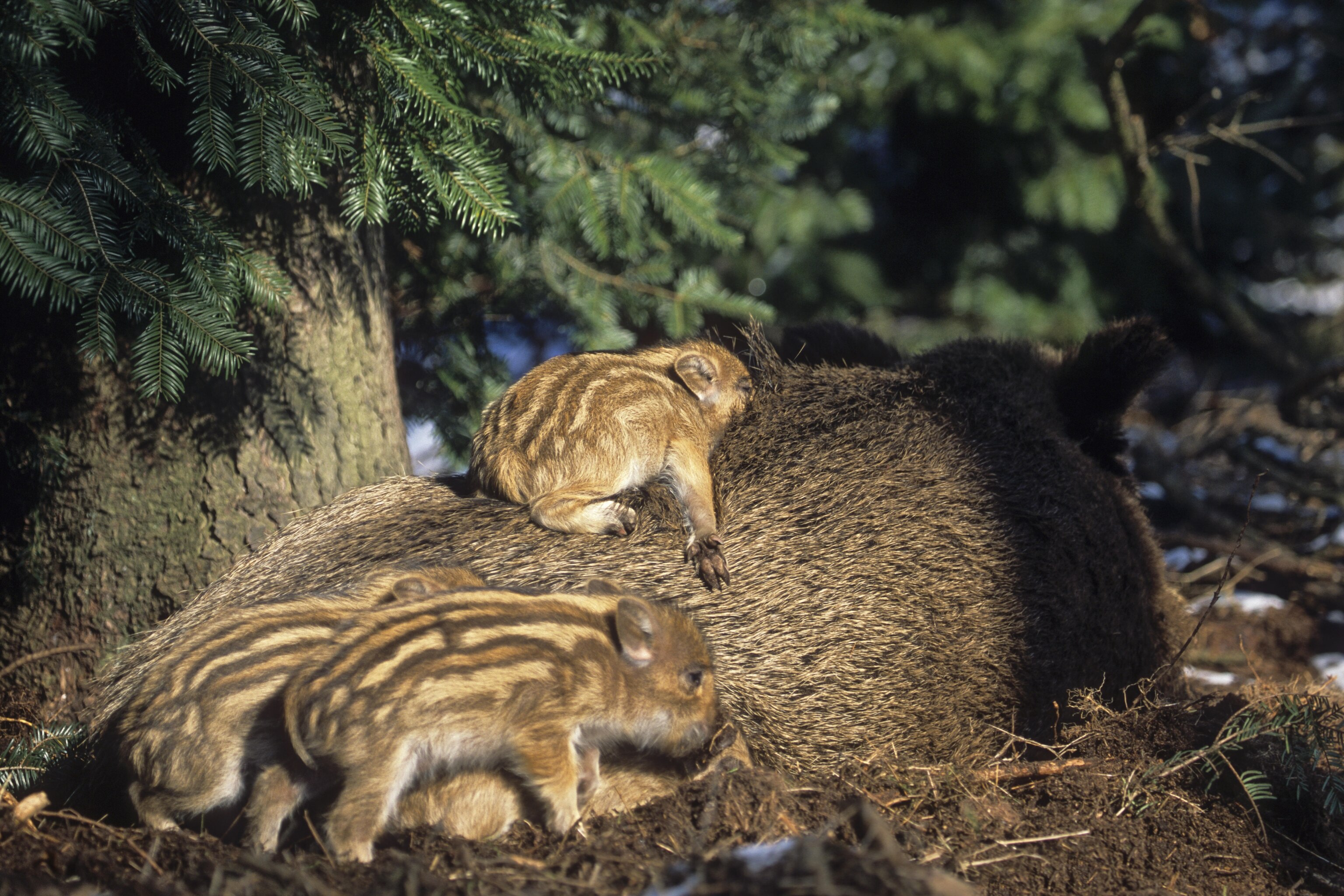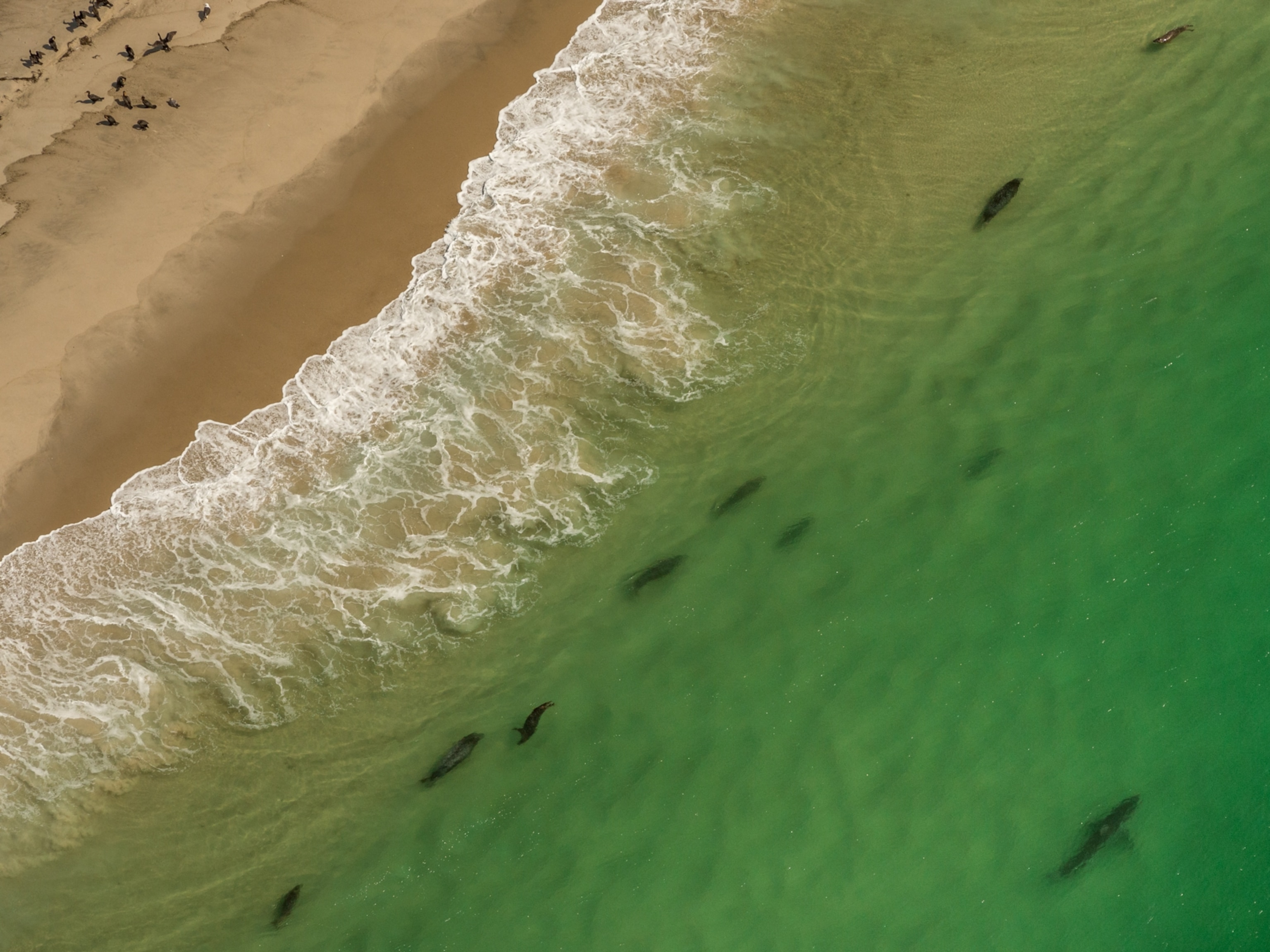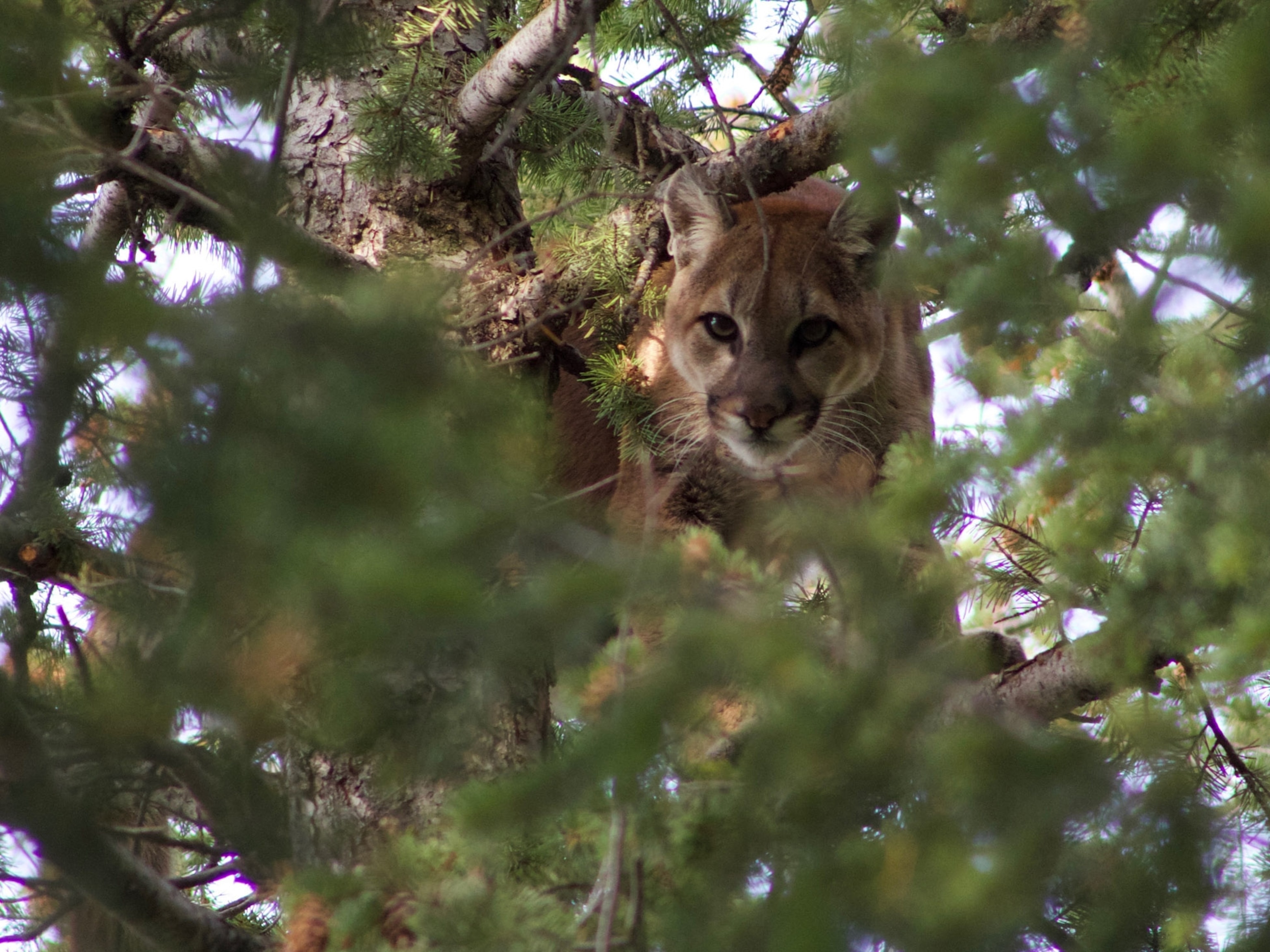
Hogs are running wild in the U.S.—and spreading disease
The nation's six million feral pigs are destroying crops and preying on endangered species. But the most serious threat they pose is to human health.
Pigs, swine, hogs, boars. Wild, feral, invasive, non-native. Whatever words you use, these tusked omnivores are more widespread in the United States than ever before.
Wild boar, or feral swine as the U.S. Department of Agriculture refers to them, are not native to North America. Rather, European explorers and settlers brought the Eurasian species, Sus scrofa, to the New World many different times, starting as early as the 1500s, either as livestock or as animals to be hunted for food or sport. (Get the facts on Sus scrofa.)
Today, around six million feral swine run hog wild in at least 35 U.S. states, where they can grow more than five feet long and weigh more than 500 pounds. They’re adaptable creatures, capable of thriving in nearly any environment. For instance, the animals are also increasingly widespread on myriad Caribbean Islands and in Mexico, from the Baja to the Yucatán Peninsula, as well as Canada, where even deep snow and bitter cold can't slow them down. (Read how feral hogs are moving into Canada and building “pigloos.”)
What’s more, females can begin reproducing at just eight months of age, and each can produce up to two litters of four to 12 piglets every 12 to 15 months. This allows the species to multiply rapidly and colonize new territory with unparalleled efficiency. Feral swine also ravage agricultural crops, and can harm people who corner them. But those outcomes aren’t what really worry experts.

It’s their diseases.
According to the USDA, feral swine can carry a litany of pathogens that could potentially spread to people such as leptospirosis, toxoplasmosis, brucellosis, swine influenza, salmonella, hepatitis, and pathogenic E. coli.
But there’s another concern—new diseases we don’t even know about yet.
“Swine, in general, are considered a mixing vessel species, because they’re susceptible to human viruses, like influenza viruses,” says Vienna Brown, a USDA staff biologist with the agency’s National Feral Swine Damage Management Program. “And when those get into swine,” she says, they could “create a novel influenza virus.”
“So I would argue that our risk from swine is greater than it is from other, more traditional wildlife species, in part because of their gregarious nature, our proximity to them, and just sheer numbers.”
Diseases on the move
By far, U.S. health officials are most worried about African swine fever, a virus that first originated in 1921 but has since reemerged in various countries worldwide. Though not transmissible to people, the disease is always fatal to pigs, either wild or farmed, says Brown.
Were the virus to infect feral swine in the U.S., it could then spread to and devastate the U.S. pig industry, currently the world’s third largest producer of pork.
For instance, after a particularly bad outbreak of ASF in 2018, farmers in China were forced to kill more than 43 million pigs to stop the virus’ spread. In 2021, the virus was also confirmed in farmed pigs in Dominican Republic and Haiti in 2021, the closest cases geographically so far to the U.S.

“From an industry perspective, that’s what’s been keeping everyone awake at night,” says Brown.
Scientists are also tracking how diseases move through feral swine in the wild. Officials in Great Smoky Mountains National Park started monitoring feral swine health in 1959, but it wasn’t until 2005 that it saw its first case of pseudorabies. Like ASF, this virus is not a threat to humans, but it can cause aborted fetuses in pigs and death in other animals, such as wild raccoons and opossums and even pet cats and dogs. (Learn more about the battle to control America’s most destructive species.)
“The prevalence increased from basically zero to roughly 20 to 40 percent, depending on the year,” says William Stiver, supervisory wildlife biologist for the national park. “But it’s certainly here, and we’ve watched it sort of migrate across the park through the pig population.”
Leptospirosis, which is caused by a bacterium, has also been found in the park’s feral swine. If left untreated in people, it can cause kidney damage, meningitis, liver failure, respiratory distress, and death, according to the U.S. Centers for Disease Control and Prevention.
Swine brucellosis, also caused by a bacterium, has appeared in pigs in the Midwest, says Travis Guerrant, wildlife biologist and state director for USDA-APHIS-Wildlife Services’ operations in Missouri and Iowa. This disease can spread to humans through contact with blood and other body fluids and tissues. Antibiotics kill the infection in the early stages, but if left undiagnosed, brucellosis can cause long-lasting health problems and even death.
Certain populations, such as hunters and farmers, are at greatest risk, which is why Guerrant recommends anyone who handles feral swine to wear rubber gloves and avoid fluid exchange. “Nobody wants brucellosis,” he says.
In 2007 and 2008, at least three people in the eastern U.S. contracted brucellosis after hunting feral swine, according to the CDC.
None of those cases were fatal, and so far, transmission between pigs and people remains very low. But the more feral swine multiply and expand their range, the more that opportunity grows.
Damage to crops and critters
As omnivores with the ability to tear up soil like a rototiller, feral swine cause an estimated $2.5 billion in damages to U.S. crops, pastures, forests, and livestock each year.
“We had a guy that couldn’t grow corn for years,” says Guerrant.

As generalist eaters, pigs also prey on native wildlife, from ground-nesting birds like Texas’ northern bobwhite to endangered green and loggerhead sea turtle eggs on islands in South Carolina to the Jones’ middle-toothed land snail and red-cheeked salamander in the Smokies.
Feral swine may be partly to blame for the decline of the Florida panther, which preys on the pigs and can catch pseudorabies, an often fatal disease. (Related: “How America’s most endangered cat could help save Florida.”)
“Wild hogs even have significant impacts on our cultural resources in terms of old home sites, and cemeteries,” says Stiver, explaining that national parks have an obligation to preserve archaeological artifacts.
“We see tombstones flipped over and things of that nature,” he says.
Fighting back
So far, trying to kill feral swine outright has not worked. Officials in the Smokies have removed over 15,000 feral swine since trapping and hunting efforts began, but the population remains relatively unchanged, Stiver says.
“Places like Florida, California, Oklahoma, Texas—their populations are so big and so widespread … eradication is not really the goal at this point,” says Brown. “It’s about damage management.”
However, in the border areas where feral swine have not yet become fully established, there are glimmers of hope. (Learn how Europeans are managing an influx of feral swine.)
In 2021, Guerrant’s team eliminated 9,857 feral swine from the state of Missouri, which represents the northern limit of feral swine range in the Midwest—a reduction of 60 percent.
Guerrant coordinated the successful response between 13 federal and state agencies, as well as agricultural and conservation organizations.
In the end, trying to control feral swine far outweigh the costs, experts say—even if those benefits aren’t immediately clear.
“We can readily value the price of an acre of corn,” says Brown. “But when you look at the cost of disease spillover, we kind of can’t even fathom the cost around what that would look like.”
“That’s what we’re preventing now,” says Brown.
You May Also Like
Go Further
Animals
- Octopuses have a lot of secrets. Can you guess 8 of them?
- Animals
- Feature
Octopuses have a lot of secrets. Can you guess 8 of them? - This biologist and her rescue dog help protect bears in the AndesThis biologist and her rescue dog help protect bears in the Andes
- An octopus invited this writer into her tank—and her secret worldAn octopus invited this writer into her tank—and her secret world
- Peace-loving bonobos are more aggressive than we thoughtPeace-loving bonobos are more aggressive than we thought
- Why are these emperor penguin chicks jumping from a 50-foot cliff?Why are these emperor penguin chicks jumping from a 50-foot cliff?
Environment
- U.S. plans to clean its drinking water. What does that mean?U.S. plans to clean its drinking water. What does that mean?
- Food systems: supporting the triangle of food security, Video Story
- Paid Content
Food systems: supporting the triangle of food security - Will we ever solve the mystery of the Mima mounds?Will we ever solve the mystery of the Mima mounds?
- Are synthetic diamonds really better for the planet?Are synthetic diamonds really better for the planet?
- This year's cherry blossom peak bloom was a warning signThis year's cherry blossom peak bloom was a warning sign
- The U.S. just announced an asbestos ban. What took so long?The U.S. just announced an asbestos ban. What took so long?
History & Culture
- Why Passover is one of Judaism’s most important holidaysWhy Passover is one of Judaism’s most important holidays
- Is this mass grave a result of contagion—or cannibalism?Is this mass grave a result of contagion—or cannibalism?
- The surprising story of how chili crisp took over the worldThe surprising story of how chili crisp took over the world
- We swapped baths for showers—but which one is better for you?We swapped baths for showers—but which one is better for you?
- How a 3,000-year-old tomb upended what we know about ancient PeruHow a 3,000-year-old tomb upended what we know about ancient Peru
Science
- Ground-level ozone is getting worse - here's what that meansGround-level ozone is getting worse - here's what that means
- Would your dog eat you if you died? Get the facts.
- Science
- Gory Details
Would your dog eat you if you died? Get the facts. - In a first, microplastic particles have been linked to heart diseaseIn a first, microplastic particles have been linked to heart disease
- New fossils reveal one of the smallest titanosaurs ever foundNew fossils reveal one of the smallest titanosaurs ever found
Travel
- How citizen science projects are safeguarding Costa Rican pumasHow citizen science projects are safeguarding Costa Rican pumas
- These guides spend their lives looking for dolphins. They’re dogs.These guides spend their lives looking for dolphins. They’re dogs.
- What it's like to hike to the end of the world in ChileWhat it's like to hike to the end of the world in Chile
- These restaurants serve the best steak in Buenos Aires, ArgentinaThese restaurants serve the best steak in Buenos Aires, Argentina






